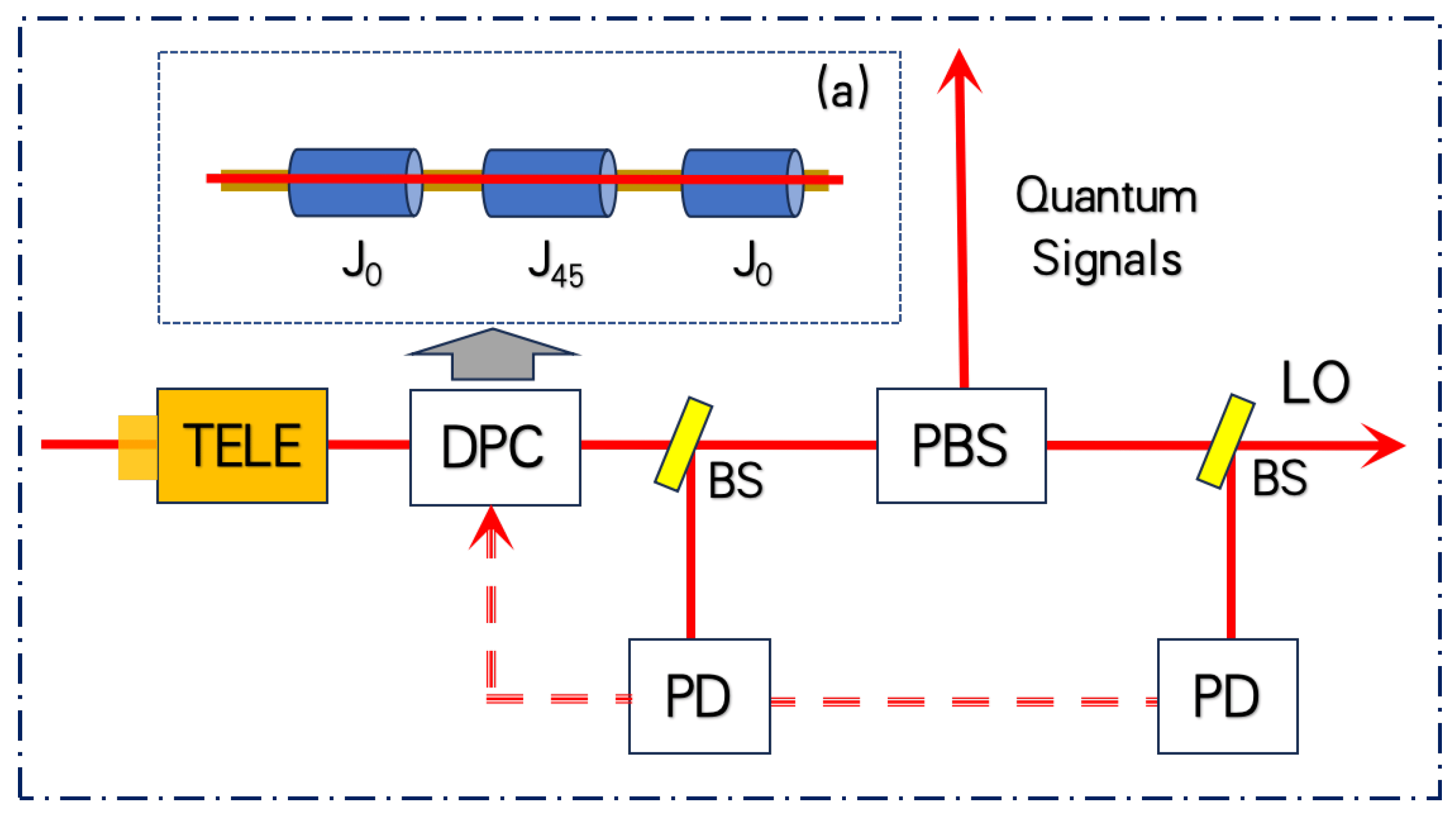Quantum Key Distribution (QKD) is a secure communication method that uses quantum mechanics to exchange secret keys. Despite challenges, terrestrial free-space QKD has gained interest due to its potential for secure global communication. The two main QKD schemes are discrete-variable (DVQKD) and continuous-variable (CVQKD). CVQKD, which uses continuous light for signal source and a homodyne or heterodyne detector for accurate detection, has proven security but lacks practical security enhancement. To address this, a machine learning approach for optimizing dynamic polarization control of signals is proposed. This could increase the performance of the CVQKD system in terms of secret key rates and maximal transmission distance.
How Can Machine Learning Enhance the Security of Quantum Key Distribution?
Quantum Key Distribution (QKD) is a secure communication method that uses the principles of quantum mechanics to exchange secret keys in quantum communications. Despite challenges posed by optical extinction and the detrimental effects of atmospheric turbulence in free space, terrestrial free-space QKD has garnered significant interest due to its inherent flexibility in establishing secure global communication links.
Traditional QKD schemes, which produce random secret keys for two participants, can be composed of the discrete-variable (DV) QKD scheme and the continuous-variable (CV) QKD scheme. DVQKD encodes the secret key information of bits in polarization states of single photons, whereas CVQKD encodes the secret key information with the two related quadratures of optical fields, including either discretely modulated states (DM) or Gaussian modulation (GM) states.
What are the Advantages and Challenges of Continuous-Variable Quantum Key Distribution?
The initial QKD was called DVQKD as it makes full use of single photons for the signal source and the valuable single-photon detector for precise detection. For the counterpart CVQKD, it uses continuous light for the signal source and employs a homodyne detector or heterodyne detector for accurate detection. This method has the advantages of compatibility and usability, great strengths since they can be implemented with the available optical communication technology.
Since CVQKD was proposed in practical implementations, many schemes have been proposed in the exploration of their theories and experimentation, such as smart detection of feasible eavesdroppers and different types of modulation of Gaussian states. The security of the corresponding CVQKD system has been proven regarding both the finite-size regime and asymptotic limit. However, there is little work on enhancement of practical security related to secret key generation at the receiver of a system.
How Can Machine Learning Optimize Dynamic Polarization Control in Quantum Key Distribution?
An available trick to mitigate the interference of environmental noise in quantum communications is to modulate signals with time-polarization multiplexing. However, due to effects of the atmospheric turbulence in free space, the polarization of signals fluctuates randomly, resulting in feasible information leakage when direct polarization demultiplexing is carried out at the receiver, drowning out the noise-contained signals.
For enhancing the practical security of the continuous-variable quantum key distribution (CVQKD), a machine learning (ML) approach for optimization of the dynamic polarization control (DPC) of signals transmitted through atmospheric turbulence is proposed. An optimal DPC scheme can be adaptively adjusted with ML algorithms, which is based on the received signals at the receiver for solving the loophole problem of information leakage since it provides an accurate response to the polarization changes regarding the anamorphic signals.
What are the Benefits of Machine Learning-Based Dynamic Polarization Control?
The performance of the CVQKD system can be increased in terms of secret key rates and maximal transmission distance as well. Numerical simulation shows the positive effect of the ML-based DPC while taking into account the secret key rate of the CVQKD system. The ML-based DPC effectively reduces the feasibility of information leakage and hence results in an increased secret key rate of the practical CVQKD system.
What are the Potential Loopholes and Countermeasures in Continuous-Variable Quantum Key Distribution?
However, there are still loopholes in the practical CVQKD system that are vulnerable to attack. These loopholes can be used for weakening the security of the system by an eavesdropper who may perform potential attack strategies such as a local oscillator (LO) attack, finite sampling bandwidth effects, wavelength attack, polarization attack, jitter in clock synchronization, and a blinding attack on the detector.
Consequently, there are several countermeasures determined to resist the aforementioned attack strategies. For example, measurement-device-measurement (MDI) CVQKD has been suggested in experiments for defending against potential attacks in detectors. In addition, real-time shot-noise measurement detection has been employed at the receiver to defend against LO-involved attacks.
Publication details: “Adjusting Optical Polarization with Machine Learning for Enhancing Practical Security of Continuous-Variable Quantum Key Distribution”
Publication Date: 2024-04-09
Authors: Zicheng Zhou and Ying Guo
Source: Electronics
DOI: https://doi.org/10.3390/electronics13081410

